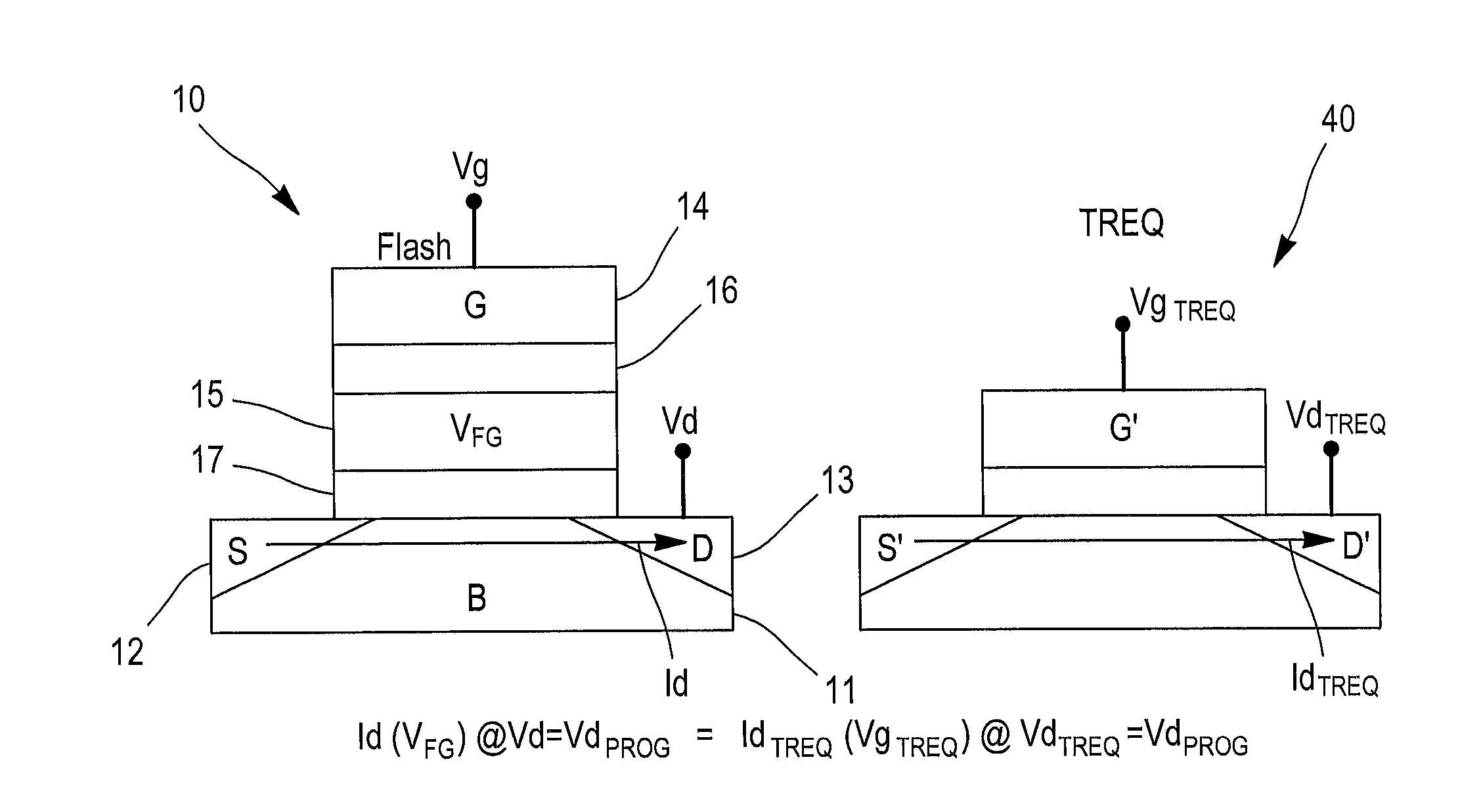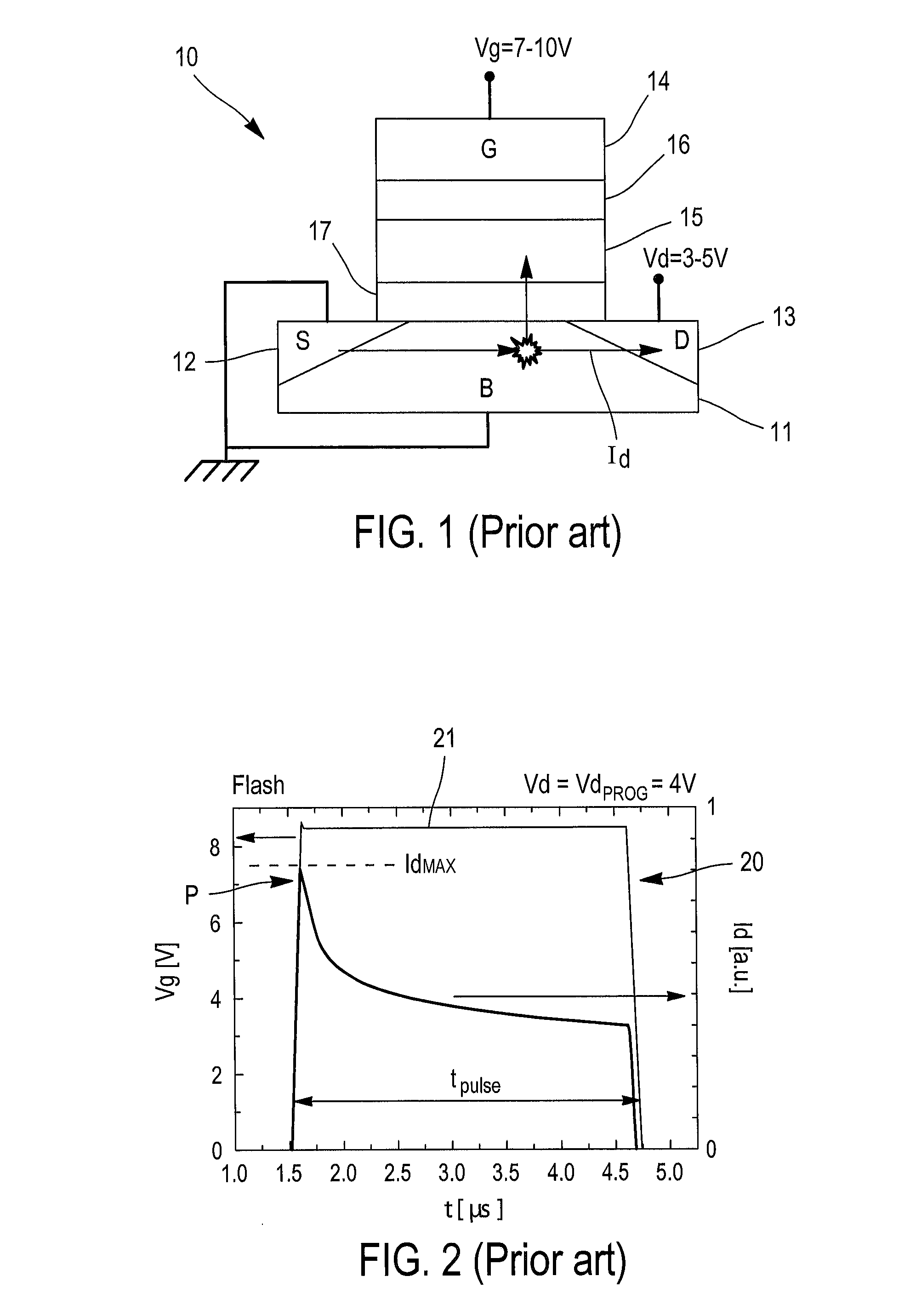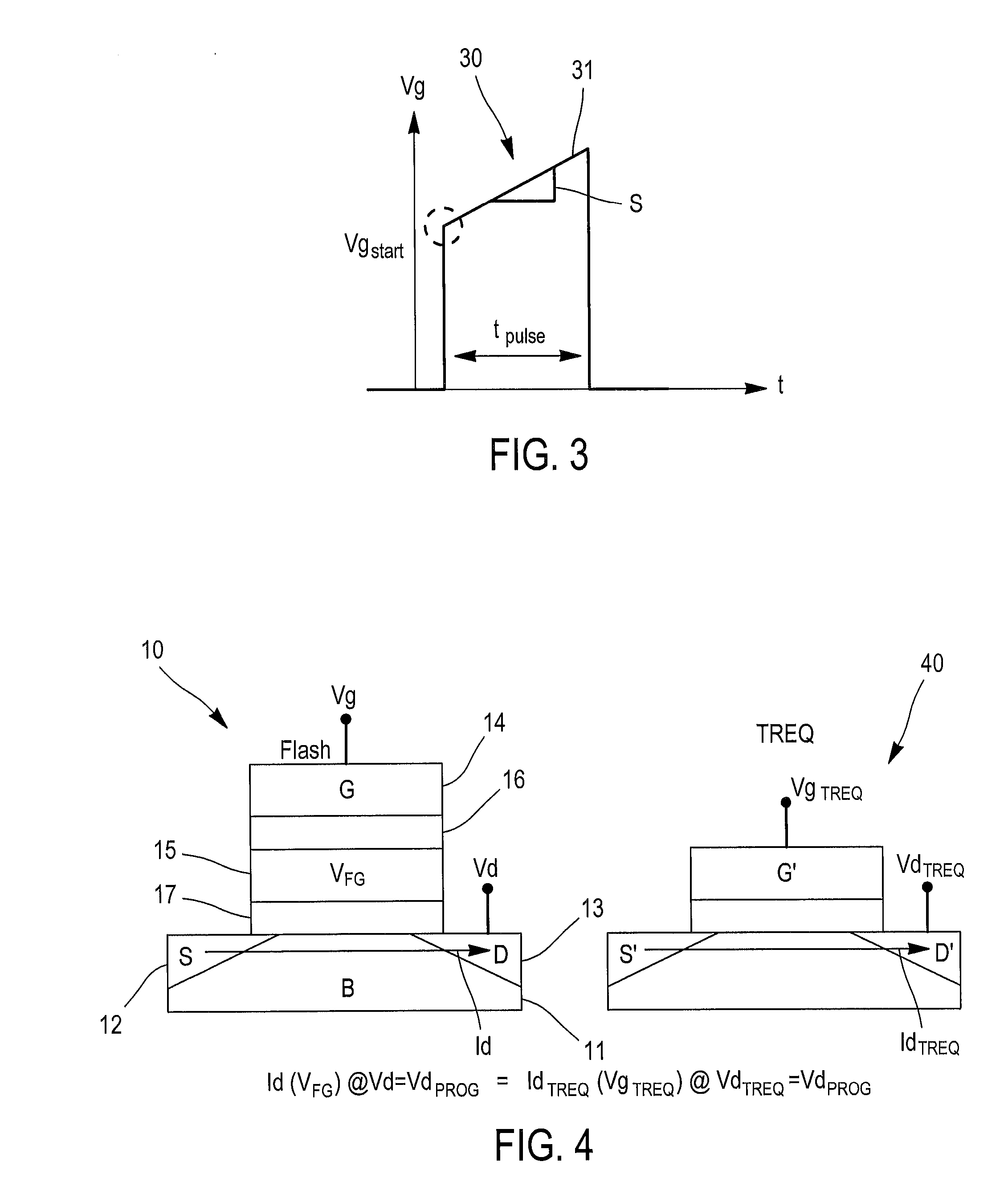Method for determining an optimal voltage pulse for programming a flash memory cell
- Summary
- Abstract
- Description
- Claims
- Application Information
AI Technical Summary
Benefits of technology
Problems solved by technology
Method used
Image
Examples
Embodiment Construction
[0049]In the description that follows, a unit EEPROM-Flash memory (i.e. of a capacity of 1 bit) of NOR type is called “flash memory cell”. This cell may be embedded in a test circuit, to develop and qualify EEPROM-Flash technology, or constitute the base of a flash memory circuit. A flash memory circuit, or memory array, includes a plurality of these memory cells arranged in lines and columns. NOR-type EEPROM-Flash memory circuits today equip numerous electronic devices, for example mobile telephones, for storing all types of information, in particular programs.
[0050]As described previously (FIG. 1), a flash memory cell is provided with a transistor including a control gate, a floating gate, drain and source regions formed in a semiconductor substrate. The control gate, the drain, the source and the substrate constitute control electrodes, noted respectively G, D, S and B. These electrodes allow to bias the transistor to carry out programming (or writing), erasing or reading operati...
PUM
 Login to View More
Login to View More Abstract
Description
Claims
Application Information
 Login to View More
Login to View More - R&D
- Intellectual Property
- Life Sciences
- Materials
- Tech Scout
- Unparalleled Data Quality
- Higher Quality Content
- 60% Fewer Hallucinations
Browse by: Latest US Patents, China's latest patents, Technical Efficacy Thesaurus, Application Domain, Technology Topic, Popular Technical Reports.
© 2025 PatSnap. All rights reserved.Legal|Privacy policy|Modern Slavery Act Transparency Statement|Sitemap|About US| Contact US: help@patsnap.com



